japanese food
Sushi Restaurants: Four Different Types You Should Check Out
James Lau
Posted on March 09, 2022
Share:
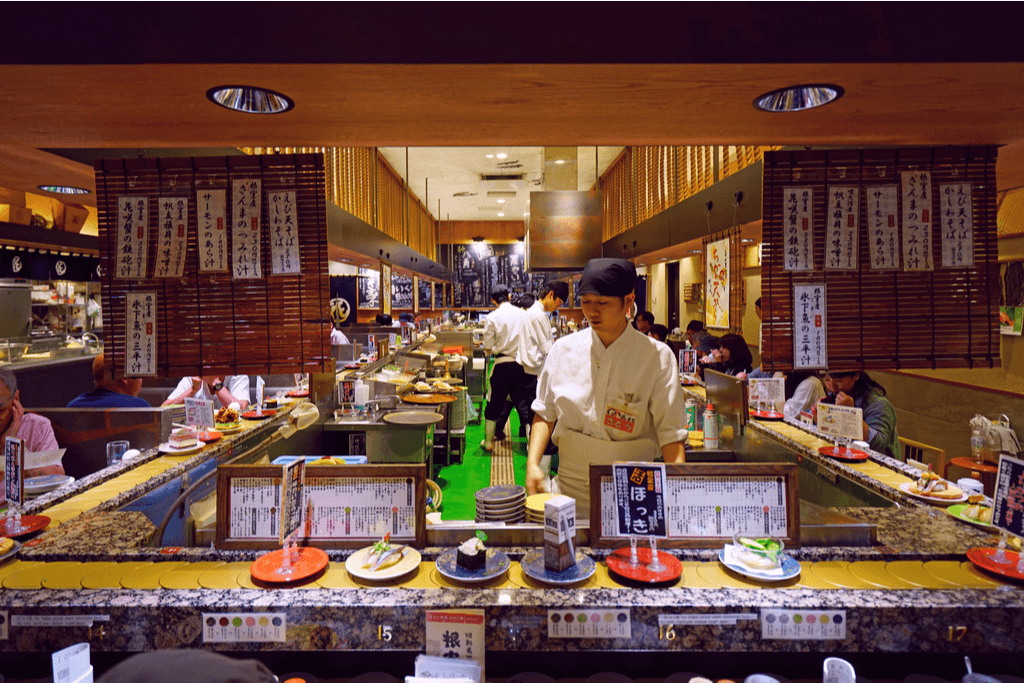
There are a lot of different places where you can eat sushi but not all of them will give you the same experience. In Japan, there are four different types of sushi restaurants where you can enjoy eating different styles of sushi, from standard quality all the way up to high quality.
All-you-can-eat? Conveyor belt? Sitting at the counter? Standing bars? Let’s take a look and discuss some of the things that you should know about them.
Kaitenzushi
Also known as conveyor belt sushi or sushi-go-rounds, kaitenzushi places are cheap and easy, perfect for fulfilling your sushi cravings. These types of restaurants are known for their long conveyor belts that crawl around the restaurant, transporting sushi and other food items to patrons on colorful dishes.
They have a large menu that range from the normal fare to some more wacky items, like ham and mayonnaise nigirizushi (thin slices of fish over clumps of rice). They may even feature some seasonal specials. Kaitenzushi restaurant menus also include appetizers, side dishes, and desserts akin to what you would find at an all-you-can-eat restaurant.
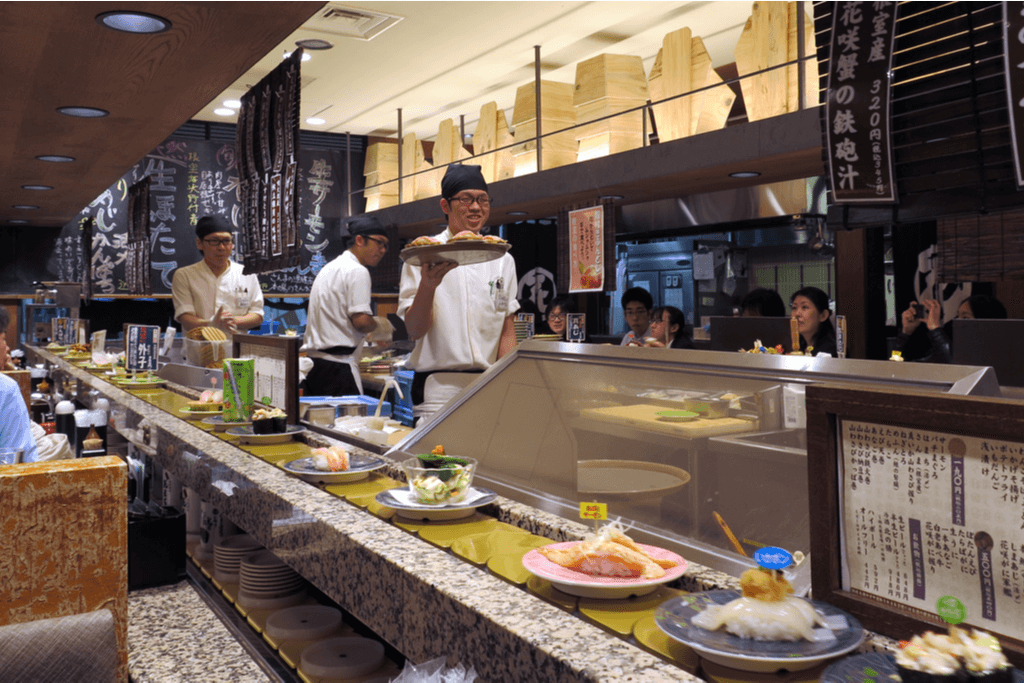
On the cheaper end of these restaurants, the cooks do not interact with the customers visiting their restaurant, nor are they formally trained. However, at the pricier end, customers can sit at the counter and watch as trained sushi chefs make sushi and place them on the conveyor belt.
Prices at kaitenzushi restaurants usually start at 120 yen ($1 USD) per plate and can go upwards to about 1000 yen (about $9 USD) for a special platter. It may be cheap, but it is important to follow Japanese conveyor belt restaurant etiquette.
Have a craving for the flavors of Japan? Check out Sakuraco! Sakuraco may not be able to send you sushi, but we can send you locally-sourced traditional Japanese snacks, sweets, teas, and kitchenware so you can experience Japan at home!
All-You-Can-Eat
These places have a large selection of sushi and allow guests to eat to their heart’s content within a set time limit, usually two hours. These restaurants usually have around 80 or so different selections on their menu. All-you-can-eat restaurants sometimes have a limit on the pricier or quality selections, or have a separate a la carte menu for those choices.
Like kaitenzushi restaurants, most of the cooks at these restaurants are not formally trained, although the quality may be slightly higher than that of a kaitenzushi restaurant. There are also several all-you-can-eat restaurants that focus on one particular style or topping, like basashi (horse meat) or maguro (tuna), employing specialists to increase the quality of their offerings.
Lunch time prices can start at around 1980 yen while dinner prices may charge upwards of 2780 yen. The prices at these restaurants might also vary according to gender where men have to pay more than women.
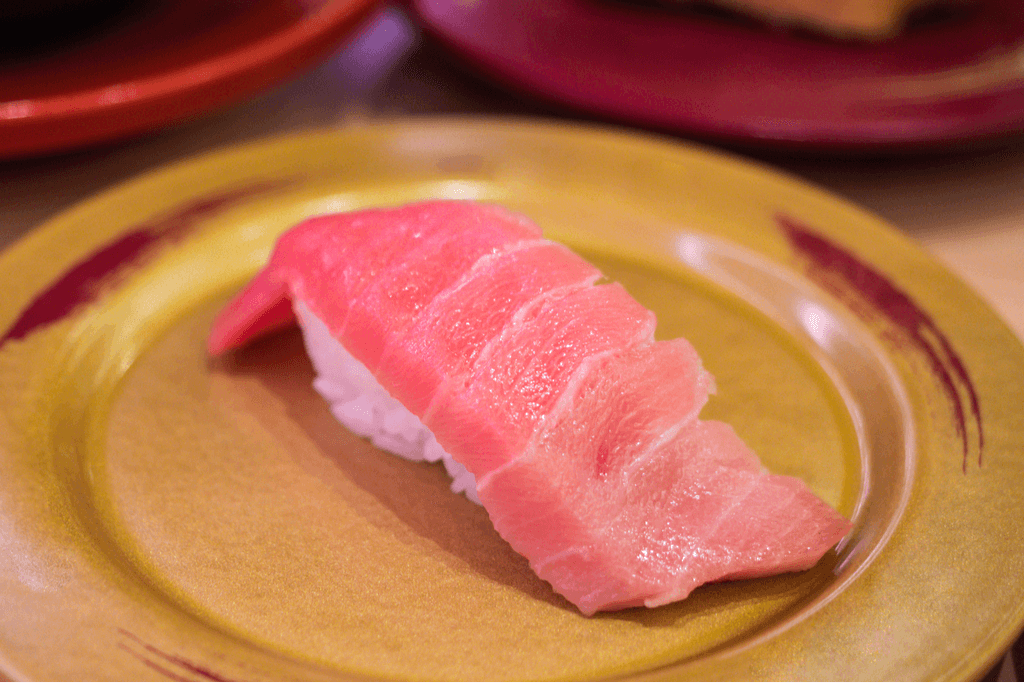
Standing Bars
Standing sushi bars are known for their authentic but affordable menus. Customers at these restaurants stand at the counter while they order directly from the chef. Unlike traditional sushi restaurants, the décor in standing bars are usually bare bones, allowing the customer to focus more on the sushi.
The chefs here are usually trained and will converse with their customers as they make their sushi. Once the sushi is complete, the chef will usually place it gently onto a geta (wooden plank for food shaped like a traditional sandal) or a plate in front of the customer.
These places can start at 75 yen ($0.65 USD) per piece of sushi with more expensive items costing around 300-600 per piece ($2.60~$5.20 USD). Standing bars can also be a great way to experience local seafood when traveling. Hokkaido seafood is a great example of some of the great food available locally.
Sushi Restaurants
This category can be informally split up into three tiers:
Chain Restaurants
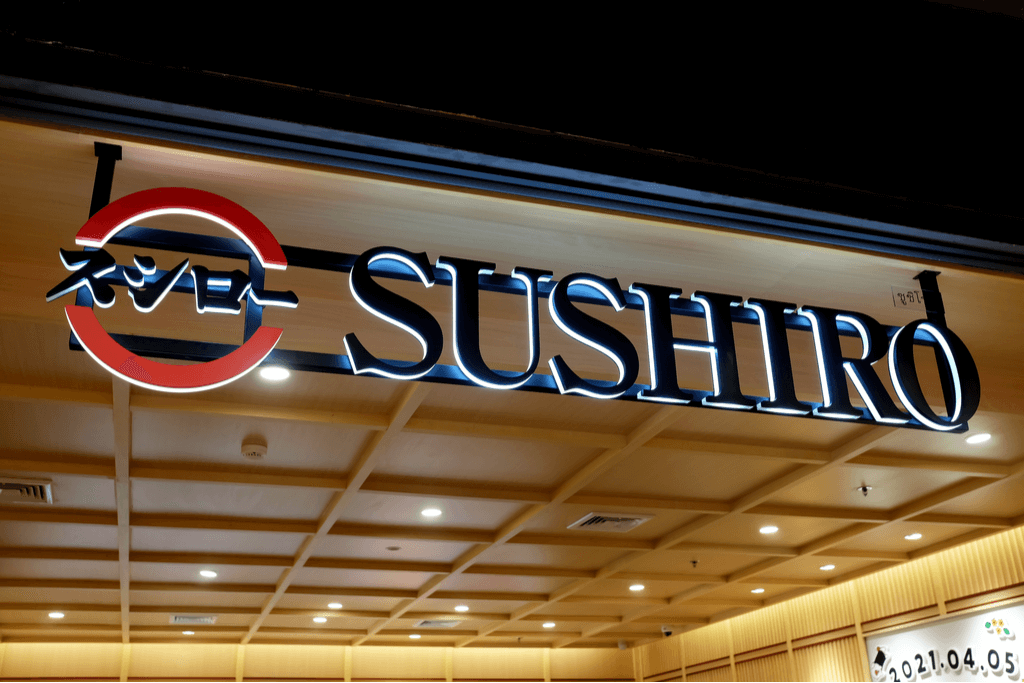
These restaurants are all over Japan, and the chefs are usually trained within the franchise. Chain restaurants are also popular in their community and are usually family favorites. The menu can vary between stores, but these restaurants will usually serve fresh fish for their customers to enjoy.
Customers can usually choose between sitting at the counter or at a table. These stores usually have an omakase (I’ll leave it to you) option where the chef will serve you their recommended selection of the day’s fish. Prices at these restaurants can start from 1480 yen ($12.80 USD) and go as high as 7000 yen ($61 USD).
Neighborhood Sushi Bars
These can be considered similar to mom-and-pop restaurants. Neighborhood sushi bars usually have chefs that have been formally trained at another store before branching out to create their own restaurant.
These places might have a counter for seven to ten guests and a smaller number of tables. The fish here are fresh, although some restaurants may serve certain types of sushi that require overnight preparation. These spots are for the locals and usually the chef will know the person by their name.
Like the chain restaurants, these places will also have their own omakase menu, although the chef may choose to serve each piece individually. The prices at these restaurants may start from 3000 yen ($26 USD) and go upwards of 10,000 yen ($87 USD).
High-class Sushi Bars or The Michelin Stars
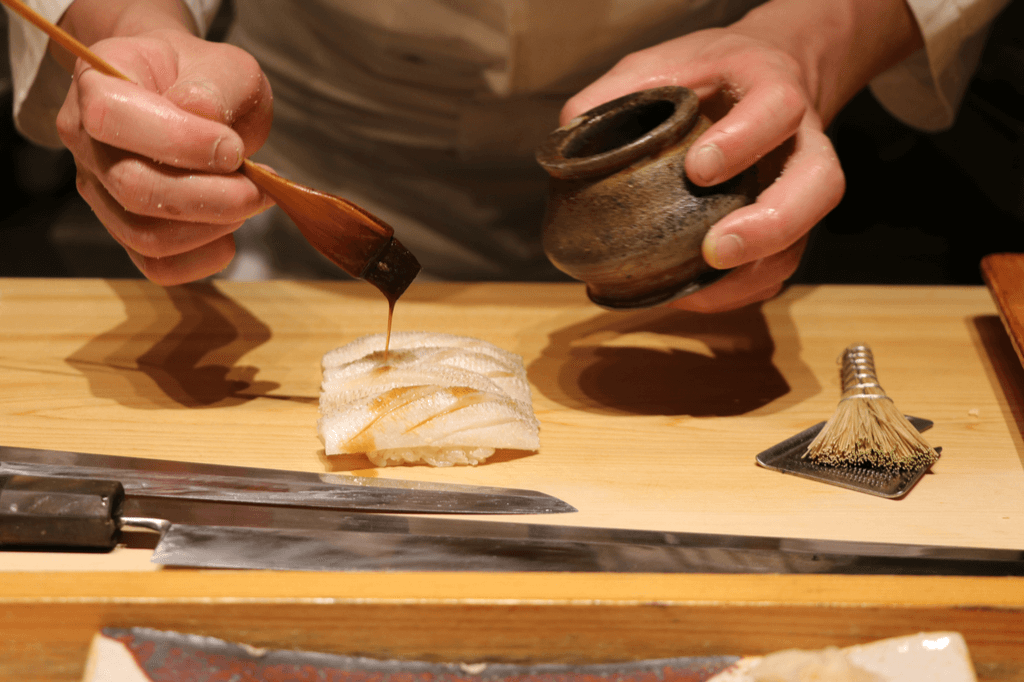
In recent years, sushi bars have gained notoriety around the world for their inclusion within the famous Michelin Guidebook. The sushi restaurants in this category are known for their traditional ambiance and for the skills of their chefs. The chefs at these places are formally trained.
Some high-class restaurants provide a long, grueling but rewarding apprenticeship that can last for years. At the end of their apprenticeship, trained apprentices can leave with the blessing of their masters to open their own restaurants. These places only have a counter for the guests to sit at so the chef can give them their undivided attention.
There is usually only an omakase option at these restaurants and the menu will differ depending on the market since chefs will go to the market themselves in the morning, handpicking the fish they want to serve. This influences the menu and the price of the meal. Some restaurants may require reservations while others may be slightly more casual.
Prices usually start from 15,000 yen ($130 USD) and can go as high as 30,000 yen ($261 USD). These are the kind of places perfect for showing off your knowledge on how to eat sushi properly.
Have you ever visited one of these kinds of sushi restaurants? Would you like to try a high-class sushi experience? Tell us about it in the comments below!

Discover authentic flavors with Sakuraco
Get Sakuraco 

Discover authentic flavors with Sakuraco
Get Sakuraco 
Related Articles

Mochi: How is Mochitsuki Made in Japan?
Mochitsuki is the Japanese tradition of pounding steamed rice to make mochi for the New Year. Families and neighbors gather to participate in this lively and meaningful tradition. The teamwork involved helps everyone feel a sense of connection.

Konpeito Candy: What Makes This Starry Treat Shine?
If you are a fan of the famous Demon Slayer series, then you probably know that the favorite treat of the adorable Nezuko Kamado is those tiny, colorful little sweets.

Kinako: The Amazing Roasted Soybean Powder!
Kinako is a very popular ingredient that can easily be found in many traditional Japanese sweets. It has a distinctive flavor, standing alongside other classic tastes such as red bean or sesame. Let’s explore this charming ingredient together, and who knows, you might even be able to make it in your own beloved kitchen!

Aaron and Claire Make the Ultimate Japanese Pork Belly: Buta no Kakuni
If you want a Japanese dish that’s rich, tender, and simple to follow, Aaron and Claire show exactly how to make it in this episode. Aaron prepares Buta no Kakuni, a classic braised pork belly dish renowned for its rich flavor and tender texture.



